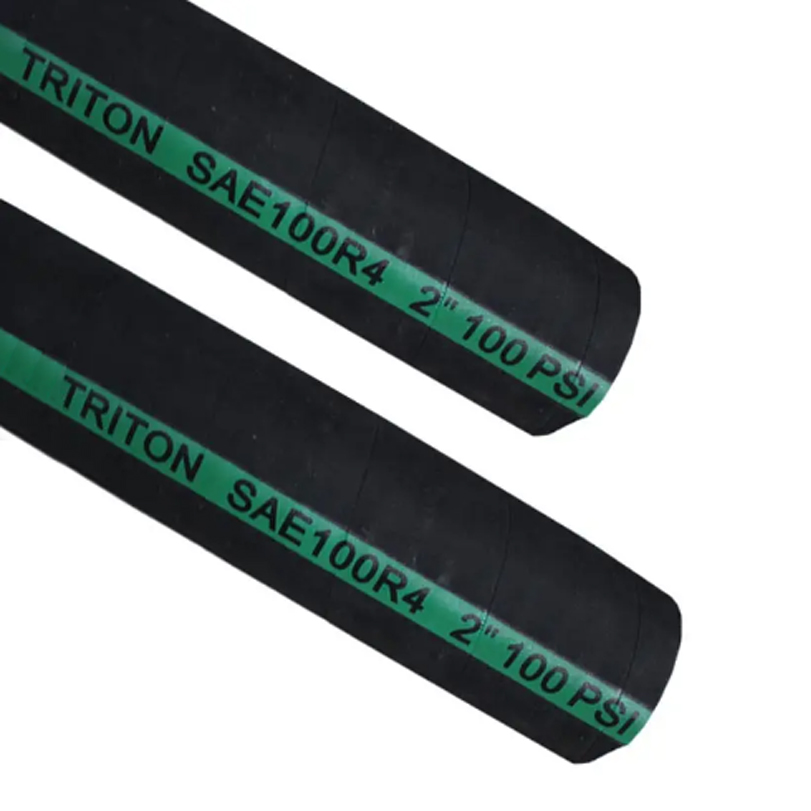335345435
Nov. . 22, 2024 04:11 Back to list
types of hydraulic hose pipe
Types of Hydraulic Hose Pipe A Comprehensive Overview
Hydraulic hoses are essential components in various hydraulic systems, facilitating the transmission of pressurized fluids needed for machinery and equipment operation. They play a pivotal role in various industries, including construction, agriculture, mining, and manufacturing. Understanding the different types of hydraulic hose pipes available is crucial for selecting the right one for a given application. This article explores the various types of hydraulic hoses, their characteristics, and their typical uses.
1. Standard Hydraulic Hoses
Standard hydraulic hoses are designed for general-purpose applications. They typically consist of three main components an internal tube, a reinforcement layer, and an outer cover. The internal tube is made from synthetic rubber or thermoplastic, designed to withstand high pressures and carry hydraulic fluids. The reinforcement, commonly made of fiber or steel wire, adds strength and helps the hose maintain its shape and flexibility. The outer cover protects the inner components from environmental factors such as abrasion, UV rays, and chemicals.
Standard hydraulic hoses are widely used in various applications, from industrial machinery to automotive systems. Their flexibility and durability make them suitable for a range of hydraulic fluid types, including oils and water-based fluids.
2. High-Pressure Hydraulic Hoses
High-pressure hydraulic hoses are designed for applications where the pressure exceeds typical operating limits. These hoses are constructed with multiple layers of reinforcement, significantly increasing their strength. High-pressure hoses can tolerate extreme conditions, making them ideal for uses in industries like construction and oil drilling, where hydraulic systems operate under substantial pressure.
For example, high-pressure hoses are crucial for hydraulic excavators, which require robust solutions to manage the powerful forces generated during operation. These hoses are often rated for pressures exceeding 5,000 PSI, ensuring reliability and safety in demanding environments.
3. Low-Pressure Hydraulic Hoses
On the other end of the spectrum are low-pressure hydraulic hoses, which are intended for applications where pressure requirements are not as stringent. These hoses typically have a single layer of reinforcement and are best suited for situations involving lighter hydraulic fluids and lower pressure ranges, generally below 1,500 PSI.
types of hydraulic hose pipe

While they are not suitable for high-pressure systems, low-pressure hoses find their application in areas like return lines and drain lines, where the hydraulic fluid returns to the reservoir. Their ease of handling and cost-effectiveness make them a popular choice for various agricultural and maintenance equipment.
4. Thermoplastic Hydraulic Hoses
Thermoplastic hydraulic hoses are made from synthetic materials, providing excellent flexibility and resistance to environmental damage. They are lighter than standard rubber hoses and can be coiled or stored more easily. Thermoplastic hoses are ideal for applications requiring a smaller diameter and lighter weight while maintaining high performance under moderate pressure conditions, typically up to 3,000 PSI.
These hoses are commonly used in mobile equipment, machine tools, and any applications where flexibility and ease of routing are essential. Their resistance to abrasion and chemicals also makes them suitable for harsh environments, allowing for longer service life compared to traditional rubber hoses.
5. Specialty Hydraulic Hoses
Specialty hydraulic hoses are designed for specific applications or environments. These hoses may be engineered to withstand extreme temperatures, certain chemicals, or specific pressures that standard hoses cannot handle. Examples include hoses for high-temperature steam applications or hoses resistant to specific corrosive substances.
Such hoses are vital in sectors like chemical processing, automotive, and aerospace, where standard hoses may not provide the required safety or performance standards.
Conclusion
In summary, hydraulic hoses are critical in ensuring the efficiency and safety of hydraulic systems across various industries. From standard and high-pressure hoses to thermoplastic and specialty options, the right selection depends on the application's specific needs, including pressure, fluid type, and environmental conditions. Understanding the types of hydraulic hose pipes available allows engineers and technicians to make informed decisions, optimizing system performance and extending equipment life. Proper maintenance and inspection of hydraulic hoses are equally important to ensure their reliability and to avert potential failures in high-stress applications.
-
SAE 100 R17 Black Smooth Cover Hydraulic Hose
NewsMar.07,2025
-
SAE 100 R17 Black Smooth Cover Hydraulic Hose
NewsMar.07,2025
-
SAE 100 R17 Black Smooth Cover Hydraulic Hose
NewsMar.07,2025
-
SAE 100 R17 Black Smooth Cover Hydraulic Hose
NewsMar.07,2025
-
SAE 100 R17 Black Smooth Cover Hydraulic Hose
NewsMar.07,2025
-
steel wire braided hydraulic hose
NewsMar.07,2025



